Art on Paper, New York
Art on Paper, Pier 36, Booth 506
K. Imperial Fine Art, San Francisco, CA
March 3-6
Art on Paper, Pier 36, Booth 506
K. Imperial Fine Art, San Francisco, CA
March 3-6
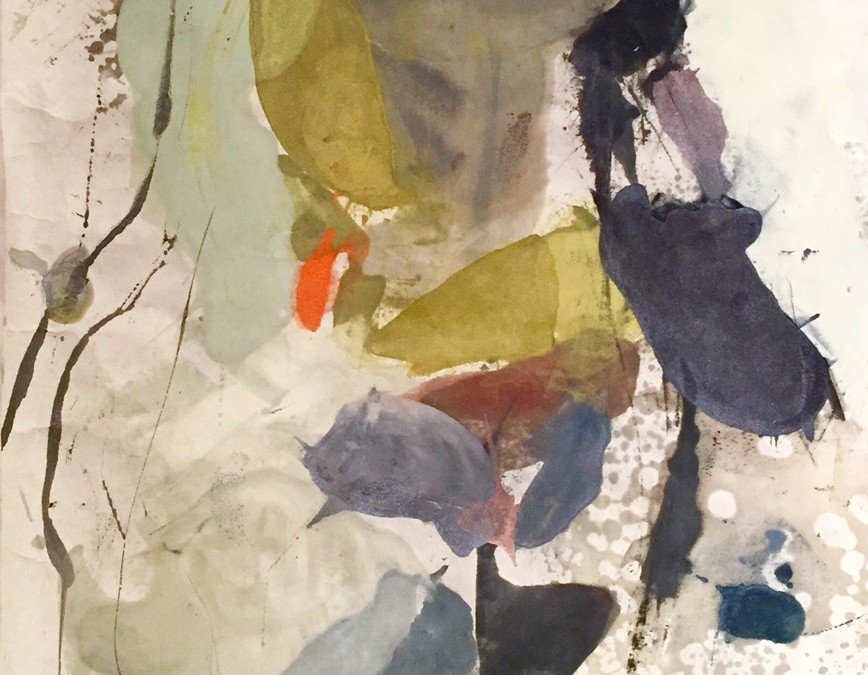
Patricia Rovzar Gallery
Seattle, WA
December 3 – 31
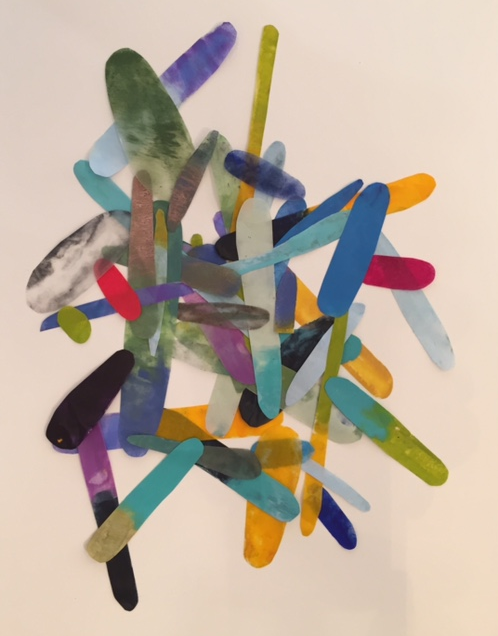
Bruce Lurie Gallery
Heidi Spector, Daniel Brice and Tracey Adams
November 6 – November 24, 2015
Los Angeles, CA
It’s been 4 months since I last posted and I’m continuing to research ideas for my project about medicines from the sea. In doing so, I’ve been playing with shapes and colors of many of the micro-organisms one might find under the microscope.

These shapes are washi that’s been hand-dipped in pigmented wax, then hand-cut to create cellular shapes.
This process, always evolving, hasn’t totally revealed itself yet in terms of where this installation might end up.
So, I keep working with space, shape and color.
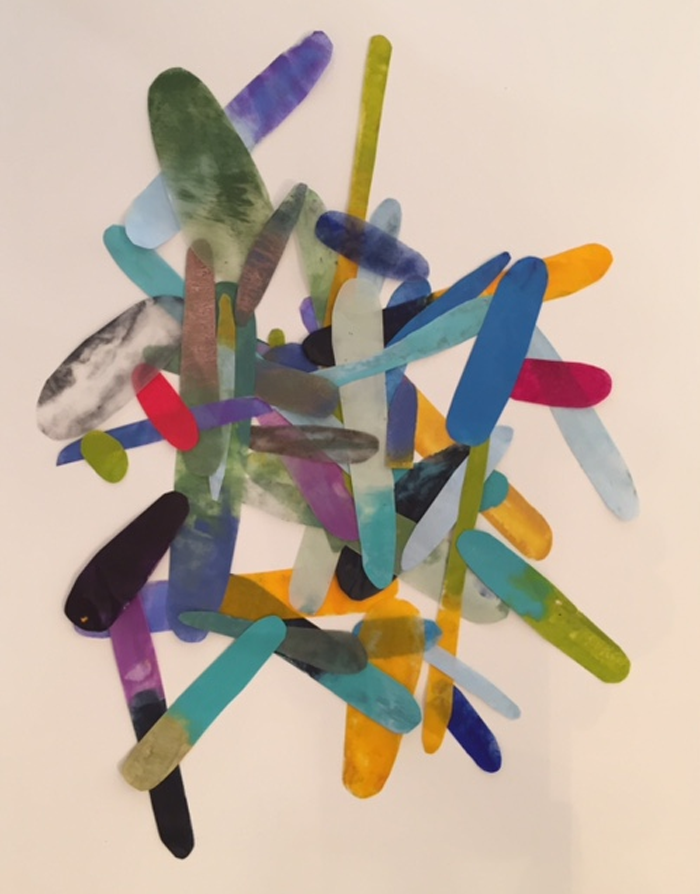
Lumenis Collage 1, mulberry and pigmented wax, 15×11, 2015
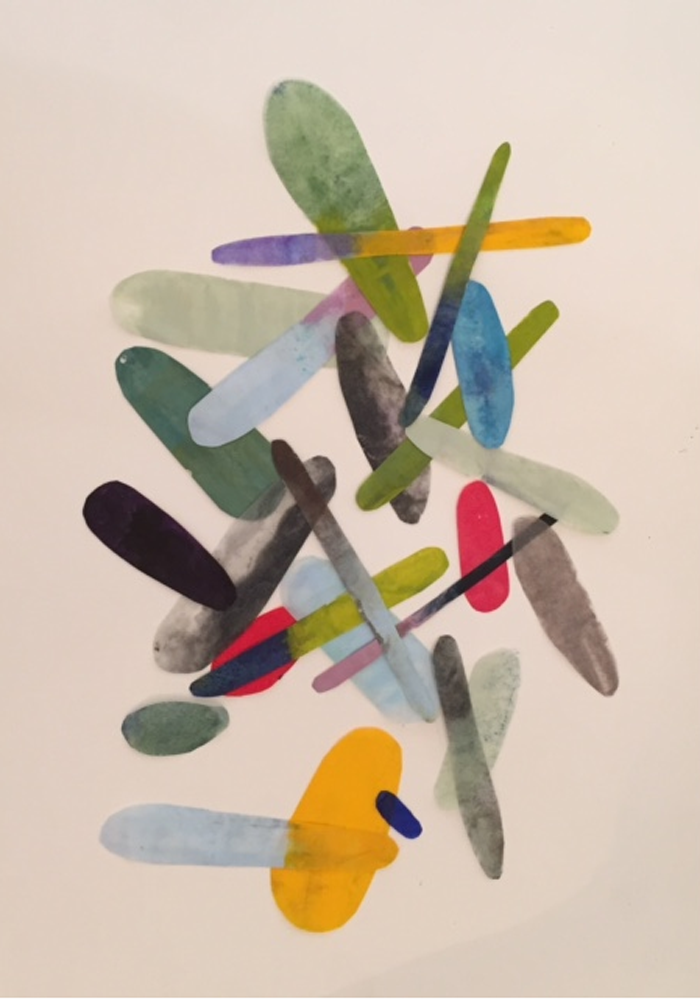
Lumenis Collage 2, mulberry and pigmented wax, 15×11, 2015
Lumenis Collage 3, mulberry and pigmented wax, 15×11, 2015
Lumenis 31, pigmented wax, collage and oil on panel, 24×24, 2015
Lumenis 30, pigmented wax, collage and oil on panel.24×24, 2015
I just began growing my own micro-organisms in Petri dishes – stay tuned for images!
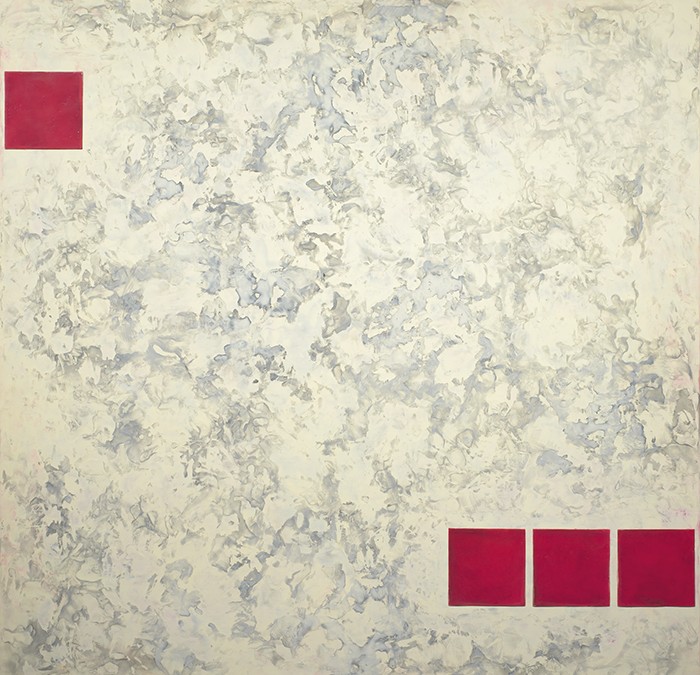
Bruce Lurie Gallery, Aspen, CO
August 13-16
Carl Cherry Center for the Arts
Carmel, CA
July 24 – September 26, 2015
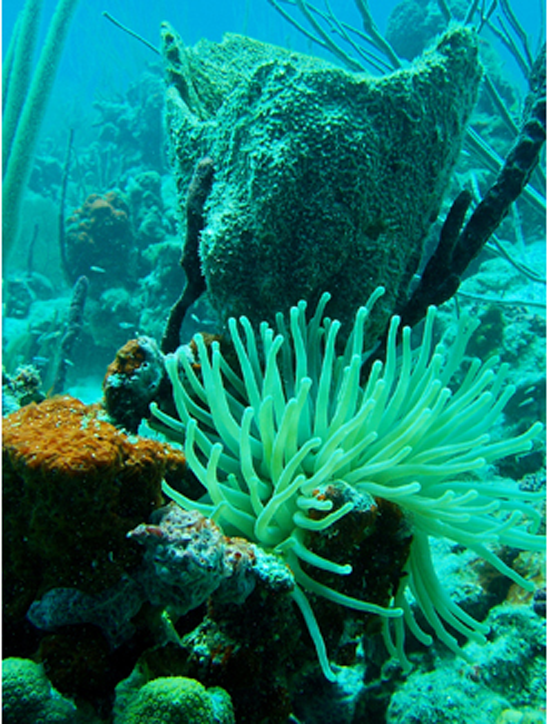
In April of this year, I was honored to receive a Pollock-Krasner Foundation Grant. I knew exactly what I wanted to do with a portion of the award. During the spring of 2014, I was listening to KQED radio and heard an interview with Dr. Roger Linington, a chemistry professor from UC Santa Cruz. He was discussing his research about micro-organisms collected during ocean dives. Roger and his colleagues would bring specimens back to the lab after they were placed in Petri dishes that had been treated with various cells – cancer, malaria, AIDS, etc. They would culture these to see if there was a positive reaction and if so, they would be tested further.

Ocean exploration often leads to new ideas, new theories and discoveries, including new medicines. From slime to sponges, researchers are exploring the ocean’s depths for new medications to treat cancer, bacterial infections, viruses, heart disease, pain, and other ailments.
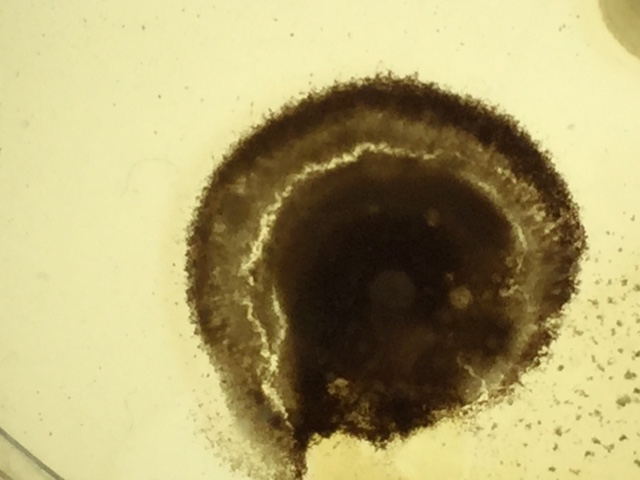
The seas contain an uncounted number of species of plants and animals. These creatures provide a vast storehouse of chemical compounds unknown on land. An ocean commission report lists chemicals and biological materials from marine organisms now in use or development, including 10 anti-cancer drugs, drugs to fight inflammation, fungus, tuberculosis, HIV, malaria and dengue.
A number of marine creatures have been used successfully in medical research and testing.
A Caribbean sponge has been discovered to generate compounds used in AZT (zidovudine, Retrovir), which is used to fight the AIDS virus. Caribbean gorgonian (a soft coral) produces a group of compounds with anti-inflammatory properties, which are also included in an anti-wrinkle cream. A tentacled aquatic organism, called bryozoan Bugula neritina, yields a compound being tested as a cancer drug. Skates (a flat fish shaped like a kite) have provided clues used in treating vision loss. Corals and mollusks are used to make orthopedic and cosmetic surgical implants. Horseshoe crabs are commonly used to test for bacterial contamination. Microalgae are used in vitamins and other nutritional supplements. Bone grafts from coral skeletons, pain relievers from sea snail venom, and infection-fighting agents from shark skin are all under study.
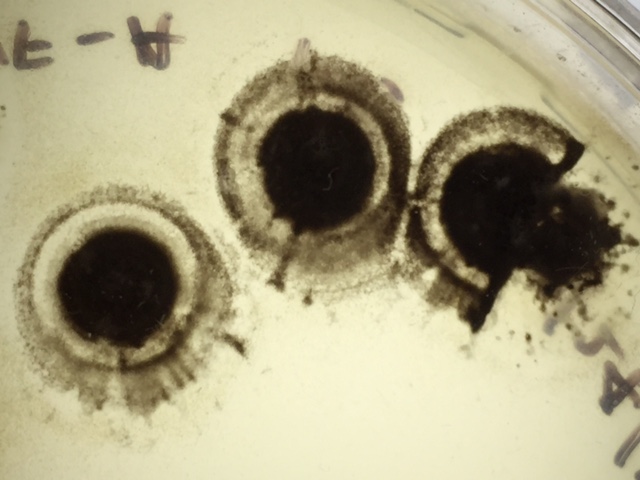
The list is plentiful even though 95 percent of the ocean has yet to be explored. Exotic, hard-to-reach places, such as deep-sea hot vents and seabed sediments, have barely been documented. However, as advances in ocean exploration and underwater technology open new depths to scientists, the ocean’s potential as a biochemical resource has become more apparent.
To uncover medical mysteries of the deep, NOAA has partnered with “bioprospecting” scientists to find marine organisms with chemical compounds capable of treating human diseases. With NOAA Ship Okeanos Explorer, America’s Ship for Ocean Exploration, experts ashore are connected live to the ship as it maps the ocean and collects ocean specimens, some with potential medical and economic benefits.
With an increasing number of specimens collected from a variety of ocean projects, scientists may find that the ocean could become the biological focus for discovering 21st century medicines.
In the future, marine ecosystems could represent an increasingly important source of medical treatments, nutritional supplements, pesticides, cosmetics, and other commercial products. Drugs from the ocean are without question one of the most promising new directions of marine science.
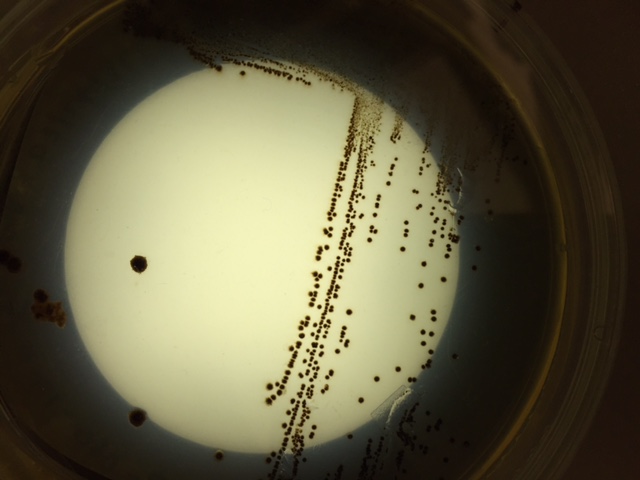
While my installation project has yet to reveal itself completely, there will be two and three dimensional components, all inspired by these beautiful images of micro-organisms from the sea.
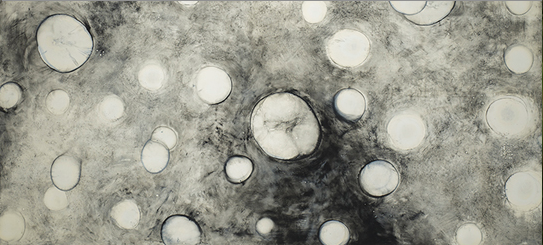
Detail from (r)evolution 28, 2014, encaustic, graphite, oil and collage on panel, 48×40
Please check back for visual updates on this project!
Bruce Lurie Gallery, Bridgehampton, NY
July 2-5, 2015
A Gallery Art, Provincetown, MA
June 3-9, 2015
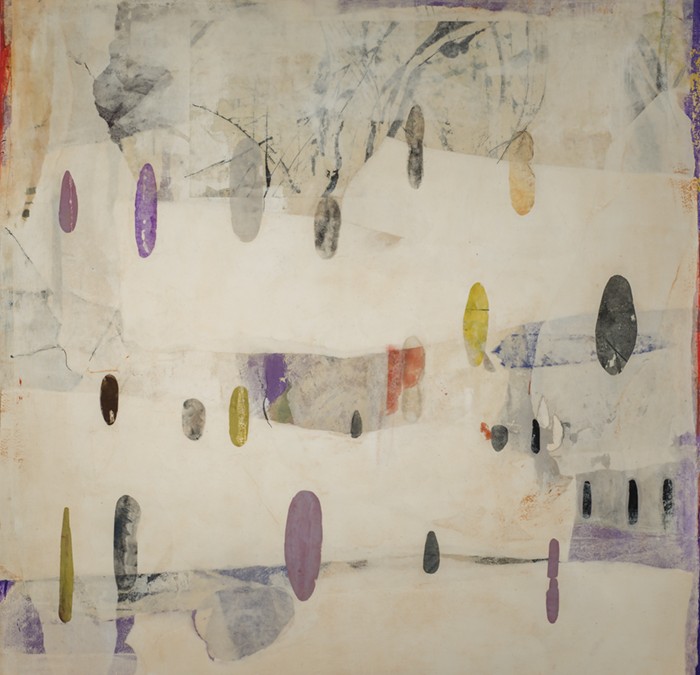
Ann Connelly Fine Art
BATON ROUGE, LA
Patricia Rovzar Gallery, Seattle, WA
July 2 – 31, 2015
Bryant Street Gallery, Palo Alto, CA
December 12-January 31, 2015
Pier 26, NYC, NY
March 5-March 8, 2015
The Cornell Museum, Delray Beach, FL
Opens October 29, 2015 – January 3, 2016
Bruce Lurie Gallery
December 2 – 7, 2014
Butters Gallery, Portland, OR
January 8 – January 31, 2015
FOLDED August 24, pigmented wax and silk thread on Kitakata, 33×35, 2014
FOLDED August 17, pigmented wax and silk thread on Kitakata, 38×32, 2014
FOLDED July 29, pigmented wax and silk thread on Kitakata, 39×27, 2014
FOLDED September 2014, pigmented beeswax and silk thread on Kitakata, 48×19, 2014
(r)evolution 20, pigmented wax, oil and collage on panel, 40×30, 2014
(r)evolution 19, pigmented wax, graphite, oil and collage on panel, 40×40, 2014
(r)evolution 15, pigmented wax, oil and collage on panel, 40×40, 2014
(r)evolution 18, pigmented beeswax, graphite, oil and collage on panel, 40×40, 2014
(r)evolution 21, pigmented beeswax, graphite, oil and collage on panel, 40×30, 2014
Patricia Rovzar Gallery, Seattle, WA
December 4 – 31, 2014
Williamsburg Art & Historical Center, Brooklyn, NY
October 25 – November 23, 2014
View the Music at Menlo interview with Cathy Kimball, ED, SJICA below.
Video by Peachtoad Productions
Last Friday, I had the pleasure of seeing GORGEOUS, an exhibition at the Asian Art Museum in San Francisco. The works shown, from SFMOMA and the Asian Art Museum collections, were mixed, from just okay to very powerful. As the curators mentioned, this exhibition is not about the context or meanings of the objects. The focus is on what the objects look like and how we react to them. What grabbed me the most were the text plaques alongside each piece. The subject of Beauty is one I’ve been exploring and reading about for the last 2 years. While there’s not enough space in a blog to do this subject justice, I’m including a few highlights below. Excerpted texts are from the curators: Allison Harding and Forrest McGill or attributed to the source.
Marilyn, 1990, Philip-Lorca diCorcia, photograph
“The gorgeous challenges the limits of conventional beauty, often approaching the grotesque, abject, overwrought or kitsch. It catches us off guard with an attraction to that other thing, the under belly, where beauty gets messy and unpredictable. Some may feel attracted, others repulsed. We can’t look away. S/he may not be beautiful; s/he is gorgeous.”
Portrait, 1988, Yasumasa Morimura, Chromogenic print with acrylic paint and gel medium
“Dust, filth, sweat, fractures, debris, remains: the breakdown of perfection is a nagging feature of the gorgeous. Sometimes these breakdowns are accidents of time and nature. Other times they are calculated effects, integral to an object’s creation and importance. In both cases, there is an allure in the imperfections of ideal forms. When we notice these imperfections and find beauty in the breakdown, these artworks might affect us in unexpected ways.”
Chemical and Biological Weapons Proving Ground/Dugway, UT/Distance-42 miles/10.51 am, 2006, Trevor Paglen, Chromogenic print
“The gorgeous is in the eye of the beholder. It is nothing unless you are there to receive it. For some artworks, the full extent of gorgeousness is not immediately seen. It is something you experience through reflection over time.”
Nonsite (Essen Soil and Mirrors), 1969, Robert Smithson, Soil and twelve mirrors
“Beauty is always bizarre. I do not mean to say that it is voluntarily, coldly bizarre…I mean that it always contains a bit of strangeness, not intentional, but unconscious, and it is this strangeness in particular that creates Beauty…Reverse the proposition, and try to conceive of a commonplace beauty!” – Charles Baudelaire
Woman, 1950, Willem de Kooning, Oil on paper
Beauty can be whimsical, fantastical, maybe even mystical…..
Éponge, 1957, Yves Klein, Resin with pigment on sponge
“If the gorgeous is about extremes, then once is not enough; only more is more. Reiteration emphasizes. It reinforces memory. By fixing a motif in our minds, it allows us to focus on small variations or changes of context. “
Untitled, (in honor of Leo at the 30th anniversary of his gallery), 1987, Dan Flavin, red, pink, yellow, blue, and green fluorescent light
“The piquing of curiosity is something repetition excels at. How many changes can an artist ring on the related motifs of bull’s-eyes, flower petal arrays and circles of circles?”
Phebo, 2004, Beatriz Milhazes, Acrylic on canvas
“Happiness is the longing for repetition.” -Milan Kundera
Qur’an, ca 1550, Iran, Gold and colors on paper
“I construct lines and color combinations on a flat surface in order to express general beauty with the utmost awareness.” – Piet Mondrian (1914). Mondrian believed that these things brought him closer to the essence of all things, “as close as possible to the truth.”
Wrapping cloth (bojagi), 1950-1960, Korea, Patchwork silk (Bojagi are wrapping cloths made from small strips of colored fabric patchworked together with impossible harmony and spontaneity within the borders of a square.)
“Simple, yet elegant. Beautiful in a quiet way.”
Lotus, deer and maple leaves, 1800-1850, School of Sakai Hoitsu, Set of three hanging scrolls; ink and colors on silk
“Some artworks have a particularly strong effect of provoking our imagination to make new stories or new settings. Gorgeous is about boundaries. Noticing them, brushing up against them, working within them, crossing them, and arguing about them. The formal boundaries of line and color, the social boundaries that shape our responses, and the physical edges of an artwork.”
Untitled (Mandorla), 1988, Ellsworth Kelly, Bronze
“Certain artworks come alive in the mind’s eye. Others continue to live there in memory, inspiring a range of imaginative musings or expressing an idea with an accessibility that can elude language, pointing to ideas, implications, even states of being beyond what we see. Sometimes this experience surpasses the artwork itself over time, and that might be the point.”
GORGEOUS, on exhibition at the Asian Art Museum, San Francisco, through September 14, 2014